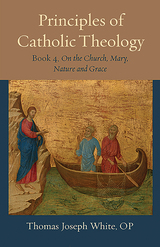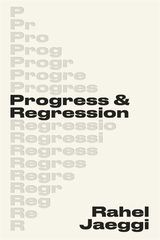
This is the first detailed, scholarly study of French foreign policy during the relatively brief period at the end of World War II when General de Gaulle was President of the provisional French government. During these years de Gaulle took the vitally important step of returning French foreign policy to the pragmatic, nationalist tradition of Poincaré and Louis Barthou. De Gaulle's efforts on the international scene, although not strikingly successful in themselves, foreshadowed many of the aims and policies which were pursued in various ways by his successors in the Fourth Republic and which he himself has reaffirmed in the years since 1958.
In the opening chapter, Mr. DePorte outlines French foreign policy between 1918 and 1940 and at the same time places de Gaulle firmly within that tradition of French diplomacy which rejected the notion that France could afford to be dependent on either Germany or Great Britain. In the second chapter, the author reviews de Gaulle's wartime experience, emphasizing his preoccupation with restoring France to full status as a Great Power and pointing out the extent to which his distrust of alliances preceded the problems he encountered with his allies as leader of the Free French. This discussion also includes a perceptive reevaluation of de Gaulle's difficulties with President Roosevelt.
The remaining chapters of the book deal in detail with the working out of diplomatic policies and problems during de Gaulle's term in office. Domestic affairs are discussed when events at home had a bearing on policy abroad. Through the issues and attitudes of these years--the Franco-Soviet pact, the distrust of allies and their blocs, the attempts to organize other groupings around France, the proposals for a Western European entity in which at least part of Germany could find a place--runs the unifying theme of the constant thrust for recognition of France's standing as a major power. During this period de Gaulle suffered many setbacks, but it is noteworthy that his basic objective the acceptance of France's right to participate in the great decisions of peace and war--which he himself did not achieve, was attained by his successors.
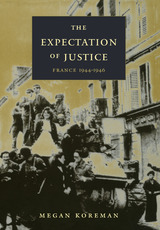
As the first social history of the “après -Libération” period from the perspective of ordinary people, Koreman’s study reveals how citizens of these towns expected legal, social, and honorary justice—such as punishment for collaborators, fair food distribution, and formal commemoration of patriots, both living and dead. Although the French expected the Resistance’s Provisional Government to act according to local understandings of justice, its policies often violated local sensibilities by instead pursuing national considerations. Koreman assesses both the citizens’ eventual disillusionment and the social costs of the “Resistencialist myth” propagated by the de Gaulle government in an effort to hold together the fragmented postwar nation. She also suggests that the local demands for justice created by World War II were stifled by the Cold War, since many people in France feared that open opposition to the government would lead to a Communist takeover. This pattern of nationally instituted denial and suppression made it difficult for citizens to deal effectively with memories of wartime suffering and collaborationist betrayal. Now, with the end of the Cold War, says Koreman, memories of postwar injustices are resurfacing, and there is renewed interest in witnessing just and deserved closure.
This social history of memory and reconstruction will engage those interested in history, war and peace issues, contemporary Europe, and the twentieth century.
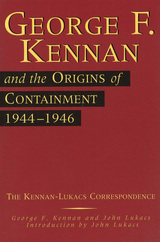
In 1945 the United States saw the Soviet Union as its principal ally. By 1947, it saw the Soviet Union as its principal opponent. How did this happen? Historian John Lukacs has provided an answer to this question through an exchange of letters with George F. Kennan. Their correspondence deals with the antecedents of containment between 1944 and 1946, during most of which time Kennan was at the American embassy in Moscow.
Kennan had strong opinions about America's appropriate role during and after World War II and is perhaps best known as the architect of America's containment policy. Much has been written about Kennan and containment, but relatively little is known about the events that made him compose and send the Long Telegram in 1946 that ultimately became the draft for foreign policy dealing with the Soviets in the following forty years.
These letters show Kennan's fear of the extent to which the United States misunderstood the Soviet regime. Especially in 1944, at the time of the Russians' betrayal of the Warsaw Uprising, it became evident that the Soviets were interested in establishing their rigid domination of Eastern and Central Europe and dividing the continent.
Kennan's letters to Lukacs are thorough and detailed, suggesting that the Truman administration was not in the least premature in opposing the Soviet Union. Indeed, both correspondents suggest that these decisions should have been made earlier. This series of letters will add greatly to our understanding of what preceded containment and the Cold War in 1947.
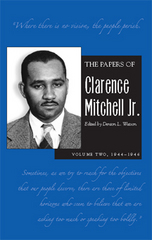
Clarence Mitchell Jr. was the driving force in the movement for passage of civil rights laws in America. The foundation for Mitchell’s struggle was laid during his tenure at the Fair Employment Practice Committee, where he led implementation of President Roosevelt’s policy barring racial discrimination in employment in the national defense and war industry programs. Mitchell’s FEPC reports and memoranda chart the beginning of the modern civil rights movement.
The first two volumes of a projected five-volume documentary edition of The Papers of Clarence Mitchell Jr. illuminate the FEPC’s work as a federal affirmative-action agency and the government’s struggle to enforce the nation’s antidiscrimination policy in industry, federal agencies, and labor unions.
Subsequent volumes will trace Mitchell’s successive enlistment of seven presidents in establishing and enforcing a permanent national nondiscrimination policy. Through his efforts, Congress passed the 1957, 1960, and 1964 Civil Rights Acts prohibiting discrimination in public accommodations, federal spending, and employment based on race, color, sex, and national origin; the 1965 Voting Rights Act; and the 1968 Fair Housing Act.
Editor Denton L. Watson introduces and annotates Mitchell’s writings, providing context and insight for students and scholars of civil rights history, government, law, and sociology.
READERS
Browse our collection.
PUBLISHERS
See BiblioVault's publisher services.
STUDENT SERVICES
Files for college accessibility offices.
UChicago Accessibility Resources
home | accessibility | search | about | contact us
BiblioVault ® 2001 - 2025
The University of Chicago Press





